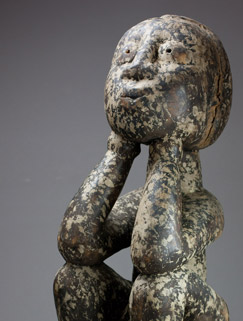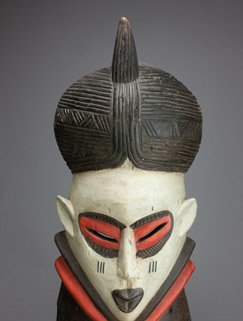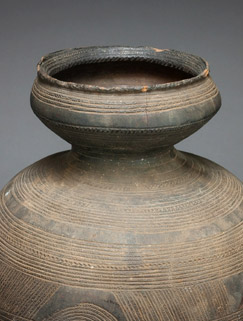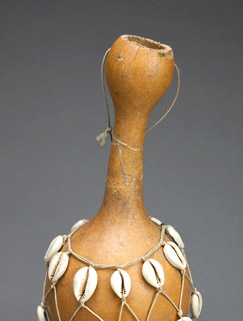
Sculptures
Items
African cultures are known in the world for the tradition of sculpturing three-dimensional and relief items which are considered to be the most significant items in the expression of traditional art. Male and female figures are made of wood, bones, ivory, stone, clay, ceramics, iron and copper alloy. The sculptures reflect cultural values and models visible in the images of spirits, forebearers and deities. They are used for every-day and ceremonial purposes, such as the initiation rituals, medical treatment, as status symbols, and items of religious worship, etc.
Sculptures


Masks
Items
Masks play an important role in many African ceremonies, such as funeral ceremonies, agrarian rituals, initiation rituals, various festivities, etc. They represent the spirits of the ancestors and the dead, the spirits of nature, as well as those of farmers and warriors. They are worn on the face, the head, around the waist or neck. When observed from the visual arts' point of view, masks are often a combination of human and animal characteristics. They are made of wood, natural and artificial fibres, fabrics or leather.
Masks


Usable and Decorative Items
Items
Making and dyeing of textiles is a rather vital tradition of African handicraft. Materials in different colours, forms and motifs are used for both local or imported products. The quality of the fabric and delicacy of making it indicate the status of the person using it, and the momentary fashion. However, it can also serve as protection from negative powers that could cast spells on a person.
More about collection...
Usable and Decorative Items

Making and dyeing of textiles is a rather vital tradition of African handicraft. Materials in different colours, forms and motifs are used for both local or imported products. The quality of the fabric and delicacy of making it indicate the status of the person using it, and the momentary fashion. However, it can also serve as protection from negative powers that could cast spells on a person.
Receptacles are made of various materials. Most of them are delicately decorated with great attention paid to details. They are made for different purposes: from receptacles for keeping food products, preparation of food, to receptacles for transport and the keeping of water, boxes for the keeping of valuable personal items, to receptacles used in rituals.
There is a variety of exchange means in Africa, depending on the period or geographical regions (salt, shells, beads, woven fabrics, local and European coins, jewellery and tools). They served as a means of payment, but as a status symbol demonstrating the wealth of an individual as well. The value of the usable items made of iron, copper alloys, silver and gold rested upon the durability and value of material. Albeit some sorts of woven clothing, glass beads, cowry shells and jewellery were used as a means of payment, that form of usage was their secondary function.
Weights for gold were used by the Ashanti (Ghana) population as early as in the pre-collonial period to establish the weight of gold powder that was used as a means of exchange. They were usually made of cheaper metals, such as brass, or bronze. They were made in various forms (anthropomorphic, zoomorphic and geometrical) linked to certain proverbs. Their weight was established by the royal decree.

Musical Instruments
Items
Music is an important part of African culture. It accompanies the every-day life, as well as important social events. Africa abounds in a large number of different types of musical instruments. Some of them, such as percussions, are specific for this continent. Although the rythm is a rather expressed and accentuated element, the drum is not necessarily the most typical musical instrument of Africa. Some types of instruments are in general use, while some of them are reserved either for men or women only. Some may belong to traditional institutions or political organisations, etc.
Musical Instruments
